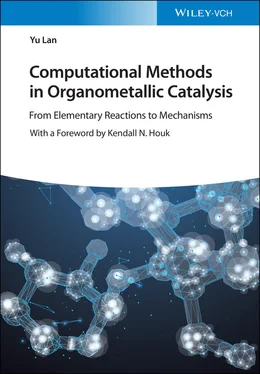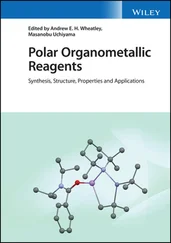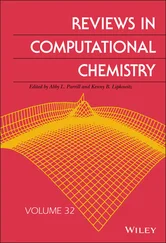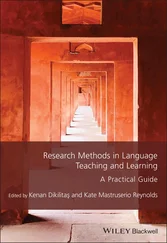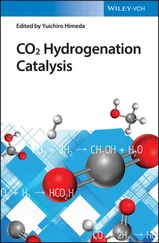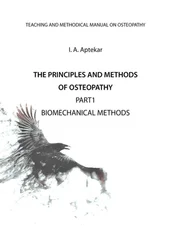Yu Lan - Computational Methods in Organometallic Catalysis
Здесь есть возможность читать онлайн «Yu Lan - Computational Methods in Organometallic Catalysis» — ознакомительный отрывок электронной книги совершенно бесплатно, а после прочтения отрывка купить полную версию. В некоторых случаях можно слушать аудио, скачать через торрент в формате fb2 и присутствует краткое содержание. Жанр: unrecognised, на английском языке. Описание произведения, (предисловие) а так же отзывы посетителей доступны на портале библиотеки ЛибКат.
- Название:Computational Methods in Organometallic Catalysis
- Автор:
- Жанр:
- Год:неизвестен
- ISBN:нет данных
- Рейтинг книги:4 / 5. Голосов: 1
-
Избранное:Добавить в избранное
- Отзывы:
-
Ваша оценка:
- 80
- 1
- 2
- 3
- 4
- 5
Computational Methods in Organometallic Catalysis: краткое содержание, описание и аннотация
Предлагаем к чтению аннотацию, описание, краткое содержание или предисловие (зависит от того, что написал сам автор книги «Computational Methods in Organometallic Catalysis»). Если вы не нашли необходимую информацию о книге — напишите в комментариях, мы постараемся отыскать её.
Computational Methods in Organometallic Catalysis — читать онлайн ознакомительный отрывок
Ниже представлен текст книги, разбитый по страницам. Система сохранения места последней прочитанной страницы, позволяет с удобством читать онлайн бесплатно книгу «Computational Methods in Organometallic Catalysis», без необходимости каждый раз заново искать на чём Вы остановились. Поставьте закладку, и сможете в любой момент перейти на страницу, на которой закончили чтение.
Интервал:
Закладка:
52 52 Adamo, C. and Barone, V. (1998). Exchange functionals with improved long‐range behavior and adiabatic connection methods without adjustable parameters: the mPW and mPW1PW models. Journal of Chemical Physics 108: 664–675.
53 53 Xu, X. and Goddard, W.A. (2004). The X3LYP extended density functional for accurate descriptions of nonbond interactions, spin states, and thermochemical properties. Proceedings of the National Academy of Sciences of the United States of America 101: 2673–2677.
54 54 Zhao, Y., Schultz, N.E., Truhlar, D.G. et al. (2005). Exchange‐correlation functional with broad accuracy for metallic and nonmetallic compounds, kinetics, and noncovalent interactions. Journal of Chemical Physics 123: 161103.
55 55 Zhao, Y. and Truhlar, D.G. (2008). The M06 suite of density functionals for main group thermochemistry, thermochemical kinetics, noncovalent interactions, excited states, and transition elements: two new functionals and systematic testing of four M06‐class functionals and 12 other functionals. Theoretical Chemistry Accounts 120: 215–241.
56 56 Zhao, Y. and Truhlar, D.G. (2006). Comparative DFT study of van der Waals complexes: rare‐gas dimers, alkaline‐earth dimers, zinc dimer, and zinc‐rare‐gas dimers. Journal of Physical Chemistry 110: 5121–5129.
57 57 Zhao, Y. and Truhlar, D.G. (2006). Density functional for spectroscopy: no long‐range self‐interaction error, good performance for Rydberg and charge‐transfer states, and better performance on average than B3LYP for ground states. Journal of Physical Chemistry A 110: 13126–13130.
58 58 Henderson, T.M., Izmaylov, A.F., Scalmani, G. et al. (2009). Can short‐range hybrids describe long‐range‐dependent properties? Journal of Chemical Physics 131: 044108.
59 59 Grimme, S. (2006). Semiempirical hybrid density functional with perturbative second‐order correlation. Journal of Chemical Physics 124: 034108.
60 60 Schwabe, T. and Grimme, S. (2006). Towards chemical accuracy for the thermodynamics of large molecules: new hybrid density functionals including non‐local correlation effects. Physical Chemistry Chemical Physics 8: 4398.
61 61 Manna, D., Kesharwani, M.K., Sylvetsky, N. et al. (2017). Conventional and explicitly correlated ab initio benchmark study on water clusters: revision of the BEGDB and WATER27 data sets. Journal of Chemical Theory and Computation 13: 3136–3152.
62 62 Bühl, M., Reimann, C., Pantazis, D.A. et al. (2008). Geometries of third‐row transition‐metal complexes from density‐functional theory. Journal of Chemical Theory and Computation 4: 1449–1459.
63 63 Kesharwani, M.K., Karton, A., Martin, J.M.L. et al. (2016). Benchmark ab initio conformational energies for the proteinogenic amino acids through explicitly correlated methods. Assessment of density functional methods. Journal of Chemical Theory and Computation 12: 444–454.
64 64 Theresa, S., Sanhueza, I.A., Kalvet, I. et al. (2015). Computational studies of synthetically relevant homogeneous organometallic catalysis involving Ni, Pd, Ir, and Rh: an overview of commonly employed DFT methods and mechanistic insights. Chemical Reviews 115: 9532–9586.
65 65 Grimme, S., Antony, J., Ehrlich, S. et al. (2010). A consistent and accurate ab initio parameterization of density functional dispersion correction (DFT‐D) for the 94 elements H‐Pu. Journal of Chemical Physics 132: 154104.
66 66 Hehre, W.J., Stewart, R.F., Pople, J.A. et al. (1969). Self‐consistent molecular orbital methods. 1. Use of Gaussian expansions of Slater‐type atomic orbitals. Journal of Chemical Physics 51: 2657–2664.
67 67 Collins, J.B., von Schleyer, P.R., Binkley, J.S. et al. (1976). Self‐consistent molecular orbital methods. 17. Geometries and binding energies of second‐row molecules. A comparison of three basis sets. Journal of Chemical Physics 64: 5142–5151.
68 68 Ditchfield, R., Hehre, W.J., Pople, J.A. et al. (1971). Self‐consistent molecular orbital methods. 9. Extended Gaussian‐type basis for molecular‐orbital studies of organic molecules. Journal of Chemical Physics 54: 724.
69 69 Rassolov, V.A., Ratner, M.A., Pople, J.A. et al. (2001). 6‐31G* basis set for third‐row atoms. Journal of Computational Chemistry 22: 976–984.
70 70 Binkley, J.S., Pople, J.A., Hehre, W.J. et al. (1980). Self‐consistent molecular orbital methods. 21. Small split‐valence basis sets for first‐row elements. Journal of the American Chemical Society 102: 939–947.
71 71 Wachters, A.J.H. (1970). Gaussian basis set for molecular wavefunctions containing third‐row atoms. Journal of Chemical Physics 52: 1033.
72 72 McLean, A.D. and Chandler, G.S. (1980). Contracted Gaussian‐basis sets for molecular calculations. 1. 2nd row atoms, Z = 11–18. Journal of Chemical Physics 72: 5639–5648.
73 73 Dunning, T.H. (1989). Gaussian basis sets for use in correlated molecular calculations. I. The atoms boron through neon and hydrogen. Journal of Chemical Physics 90: 1007–1023.
74 74 Kendall, R.A., Dunning, T.H., Harrison, R.J. et al. (1992). Electron affinities of the first‐row atoms revisited. Systematic basis sets and wave functions. Journal of Chemical Physics 96: 6796–6806.
75 75 Woon, D.E. and Dunning, T.H. (1993). Gaussian‐basis sets for use in correlated molecular calculations. 3. The atoms aluminum through argon. Journal of Chemical Physics 98: 1358–1371.
76 76 Davidson, E.R. (1996). Comment on ‘comment on Dunning’s correlation‐consistent basis sets. Chemical Physics Letters 260: 514–518.
77 77 Fuentealba, P., Preuss, H., Stoll, H. et al. (1982). A proper account of core‐polarization with pseudopotentials – single valence‐electron alkali compounds. Chemical Physics Letters 89: 418–422.
78 78 Wadt, W.R. and Hay, P.J. (1985). Ab initio effective core potentials for molecular calculations – potentials for main group elements Na to Bi. Journal of Chemical Physics 82: 284–298.
79 79 Weigend, F. and Ahlrichs, R. (2005). Balanced basis sets of split valence, triple zeta valence and quadruple zeta valence quality for H to Rn: design and assessment of accuracy. Physical Chemistry Chemical Physics 7: 3297–3305.
80 80 Hay, P.J. and Wadt, W.R. (1985). Ab initio effective core potentials for molecular calculations – potentials for the transition‐metal atoms Sc to Hg. Journal of Chemical Physics 82: 270–283.
81 81 Schwerdtfeger, P., Dolg, M., Schwarz, W.H.E. et al. (1989). Relativistic effects in gold chemistry. 1. Diatomic gold compounds. Journal of Chemical Physics 91: 1762–1774.
82 82 Stevens, W.J., Basch, H., and Krauss, M. (1984). Compact effective potentials and efficient shared‐exponent basis‐sets for the 1st‐row and 2nd‐row atoms. Journal of Chemical Physics 81: 6026–6033.
83 83 Roy, L.E., Hay, P.J., Martin, R.L. et al. (2008). Revised basis sets for the LANL effective core potentials. Journal of Chemical Theory and Computation 4: 1029–1031.
84 84 Schäfer, A., Horn, H., Ahlrichs, R. et al. (1992). Fully optimized contracted Gaussian basis sets for atoms Li to Kr. Journal of Chemical Physics 97: 2571.
85 85 Schäfer, A., Horn, H., Ahlrichs, R. et al. (1994). Fully optimized contracted Gaussian basis sets of triple zeta valence. Journal of Chemical Physics 100: 5829.
86 86 Hättig, C. (2005). Optimization of auxiliary basis sets for RI‐MP2 and RI‐CC2 calculations: core–valence and quintuple‐ζ basis sets for H to Ar and QZVPP basis sets for Li to Kr. Physical Chemistry Chemical Physics 7: 59–66.
87 87 Hellweg, A., Hättig, C., Höfener, S. et al. (2007). Optimized accurate auxiliary basis sets for RI‐MP2 and RI‐CC2 calculations for the atoms Rb to Rn. Theoretical Chemistry Accounts 117: 587–597.
88 88 Tomasi, J., Mennucci, B., Cammi, R. et al. (2005). Quantum mechanical continuum solvation models. Chemical Reviews 105: 2999–3093.
Читать дальшеИнтервал:
Закладка:
Похожие книги на «Computational Methods in Organometallic Catalysis»
Представляем Вашему вниманию похожие книги на «Computational Methods in Organometallic Catalysis» списком для выбора. Мы отобрали схожую по названию и смыслу литературу в надежде предоставить читателям больше вариантов отыскать новые, интересные, ещё непрочитанные произведения.
Обсуждение, отзывы о книге «Computational Methods in Organometallic Catalysis» и просто собственные мнения читателей. Оставьте ваши комментарии, напишите, что Вы думаете о произведении, его смысле или главных героях. Укажите что конкретно понравилось, а что нет, и почему Вы так считаете.
